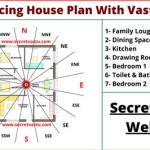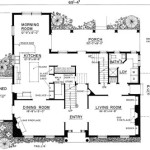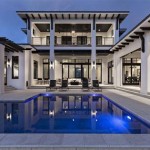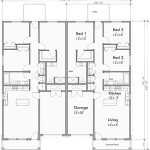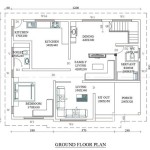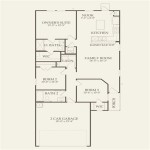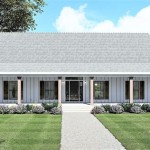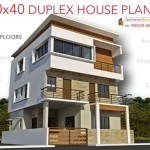Corner Block House Floor Plans: Maximizing Space and Design Potential
Corner block properties present unique challenges and opportunities for homeowners and architects. Unlike typical rectangular plots nestled between other houses, corner blocks offer exposure on two sides, lending themselves to innovative architectural designs and enhanced street appeal. However, maximizing the usable space and mitigating potential drawbacks like increased noise and privacy concerns requires careful planning and consideration of various factors. This article explores the nuances of corner block house floor plans, providing insights into key design principles and practical considerations.
The design of a house on a corner block is not simply about fitting a standard floor plan onto an unusual lot. It involves strategically utilizing the available space, capitalizing on natural light and views, and addressing the specific constraints imposed by the site. Successful corner block designs prioritize functionality, aesthetics, and integration with the surrounding environment. A well-designed corner block house can become a landmark property, adding value and visual interest to the neighborhood.
Understanding the Advantages of Corner Block Properties
Corner blocks offer several distinct advantages over typical rectangular plots. One significant benefit is the increased street frontage. This provides greater design flexibility and allows for more prominent architectural features, such as expansive windows, wrap-around porches, or distinctive landscaping. The increased visibility also enhances the overall curb appeal, potentially increasing the property's market value.
Another advantage is the potential for improved natural light and ventilation. With exposure on two sides, corner blocks offer opportunities to incorporate windows and outdoor spaces that capture sunlight from different angles throughout the day. This can result in brighter and more comfortable living spaces, reducing the reliance on artificial lighting and air conditioning. Strategic placement of windows and doors can also facilitate natural cross-ventilation, improving indoor air quality and reducing energy consumption.
Furthermore, corner blocks often provide greater flexibility in terms of access and landscaping. The additional street frontage allows for multiple driveways, pedestrian entrances, and garden areas. This can be particularly beneficial for homeowners who require separate access for vehicles, boats, or trailers, or who wish to create distinct outdoor spaces for different purposes, such as entertaining, gardening, or recreation. The increased landscaping opportunities can also enhance privacy and create a more visually appealing environment.
Addressing the Challenges of Corner Block Designs
While corner blocks offer numerous advantages, they also present specific design challenges that must be addressed to create a comfortable and functional living space. One primary concern is noise. Due to their exposed location, corner block properties are often more susceptible to traffic noise and other disturbances from the surrounding environment. Mitigating this requires careful consideration of building materials, window selection, and landscaping strategies.
Privacy is another crucial consideration. The increased street frontage can make corner block properties more visible to passersby, potentially compromising the privacy of residents. Strategies for addressing this include strategic placement of windows, fences, hedges, and other screening elements. Orientation of the house can also play a significant role in maximizing privacy by positioning living areas away from the most trafficked streets.
Furthermore, corner blocks can sometimes be subject to stricter planning regulations and building codes. Local authorities may have specific requirements regarding setbacks, height restrictions, and landscaping guidelines to ensure that corner block properties are visually appealing and compatible with the surrounding neighborhood. It is essential to consult with local planning officials and obtain the necessary permits before commencing any construction or renovation work.
Key Considerations for Corner Block House Floor Plans
Developing an effective floor plan for a corner block house requires careful consideration of several key factors. Orientation is paramount. The positioning of the house on the lot should take into account the prevailing winds, sun angles, and views. Orienting living areas towards the north or east can maximize sunlight exposure during the day, while minimizing glare and heat gain from the west.
The design should also consider the street context. The architecture of the house should complement the surrounding buildings and enhance the overall character of the neighborhood. This may involve incorporating similar architectural styles, materials, or landscaping features. The house should also be designed to create a positive streetscape presence, with well-proportioned facades, attractive landscaping, and welcoming entrances.
Internal layout is also critical. The floor plan should be designed to maximize the use of space and create a functional and comfortable living environment. Open-plan living areas can create a sense of spaciousness and flow, while well-defined private areas can provide privacy and tranquility. The layout should also consider the flow of traffic and the accessibility of different areas of the house. Adequate storage space is also essential to maintain a clutter-free and organized living environment.
Window placement in corner block houses requires careful thought to balance natural light, privacy, and energy efficiency. Large windows can capture abundant natural light and offer expansive views, but they can also compromise privacy and increase heat loss or gain. Strategic placement of smaller windows or the use of privacy glass can mitigate these issues. Operable windows can also provide natural ventilation and improve indoor air quality.
Landscaping plays a crucial role in enhancing the aesthetics and functionality of a corner block property. Well-designed landscaping can soften the architectural lines of the house, create visual interest, and provide privacy. Trees, shrubs, and other plants can also help to reduce noise levels, improve air quality, and create a more comfortable outdoor environment. Consider the use of native plants, which are well-suited to the local climate and require less maintenance.
Fencing and boundary treatments are also important considerations for corner block properties. Fences can provide privacy, security, and noise reduction. The design and materials of the fence should complement the architecture of the house and the surrounding landscape. Local regulations may dictate the height and type of fencing that is permitted on corner block properties. Consider incorporating landscaping elements, such as hedges or vines, to soften the appearance of the fence and create a more natural boundary.
Finally, sustainability should be a key consideration in the design of a corner block house. Incorporating energy-efficient features, such as solar panels, rainwater harvesting systems, and high-performance insulation, can reduce the environmental impact of the house and lower utility bills. Choosing sustainable building materials, such as recycled timber or low-VOC paints, can also contribute to a healthier and more environmentally friendly living environment.

Corner Block House Design And Building Meridian Homes

Floor Plan Friday Corner Block

The Eaton Corner Block House Design Mcdonald Jones Homes

Corner Block Home Designs Perth Lot House Plans 2024

4 Bedroom House Plans Bed Corner Block Plan 107mc Floor

Corner Block Home Designs Perth Lot House Plans 2024
View Topic Corner Block Floor Plan Help Home Renovation Building Forum

Corner Block Home Designs Perth Lot House Plans 2024

Corner Block House Designs Design Floor Plans Plan Layout

6 Bed Duplex Corner Design Plan 295du House Plans Floor Narrow Lot

